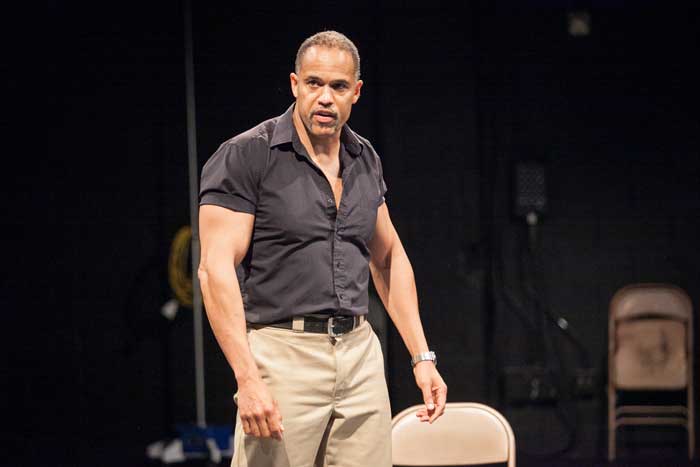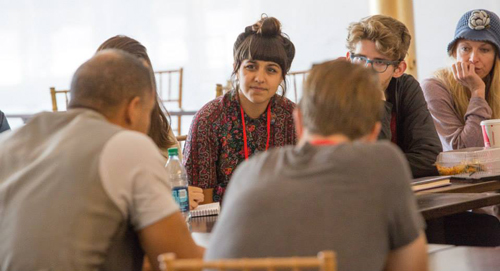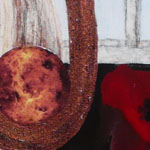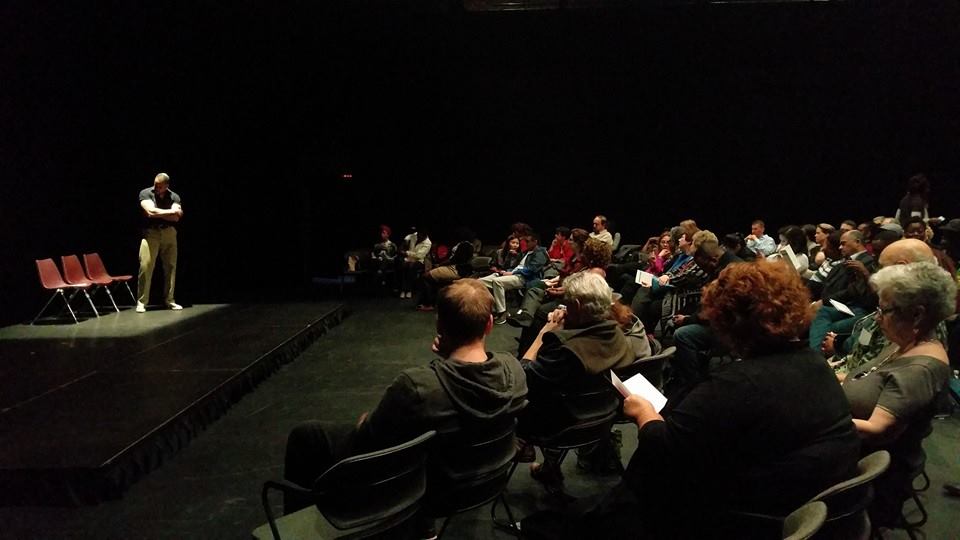
In performance: Anacostia Playhouse
I am very late getting started here. At the time of this posting it will have already been seven weeks since the close of the five-week run in the nation’s capitol. The production of American Moor at the Anacostia Playhouse in Anacostia, Washington D.C. was no easy task. But the engagement and responses of the audiences that attended were well worth the effort. We stirred many energies in and around Washington, and it has been a full-time job since then to navigate them all, and to continue to nourish the performance life of this still evolving work of theatre.
At the time of this posting it will have already been seven weeks since the close of the five-week run in the nation’s capitol. The production of American Moor at the Anacostia Playhouse in Anacostia, Washington D.C. was no easy task. But the engagement and responses of the audiences that attended were well worth the effort. We stirred many energies in and around Washington, and it has been a full-time job since then to navigate them all, and to continue to nourish the performance life of this still evolving work of theatre.
The production in Anacostia was different than any of the other productions of the play that we had done to date. The black box theatre was configured for audience on three sides. I was in amongst them from the beginning of the play until the end, which created an energy and a level of intimacy that was completely new to me in this particular work. (My apologies to any audience member who got spit on, cried on, sweated on, or bled on. I’m sure there were many…)
In all other venues thus far the audiences have been gathered in front of me. My movement about the playing space for this latest production was redirected towards including those on the left and right, and this talking to various people from sometimes no more than two feet away opened up some channels of discovery. Ultimately, American Moor will need to play to houses of 300 and 400 people, but I do think that it is important not to lose the ability to get close to them, and to allow them to feel like they are on this difficult journey as well, because they are…

Paul Kwame Johnson (left), the director of the first five productions of American Moor, and Craig Wallace, director of the Anacostia Playhouse production.
A new director on this production altered the play in other ways as well. Actually, I should say, that what was becoming standard practice in performance was interrupted and rethought, and this is always a good thing if it’s not done for its own sake, but rather to make sure that there is a real reason for each moment, and each beat in the arc of the play. Craig Wallace, a highly respected actor in the D.C. theatre community lent himself to this remounting of American Moor with thought and focus and patience, and the work is better for it.

The Anacostia Playhouse is in Anacostia, a neighborhood east of the Anacostia River that has been a predominantly African-American community since the early 1960’s. Like many African-American communities throughout the country it is underfunded and underserved, and its residents are generally low-income. However, Anacostia is spoken of as an “emerging” community, which would suggest it is evolving, and inventing itself anew. This is exciting, though there can be a very fine line to walk between the re-invigoration driven by black empowerment, and the snowball gentrification that has run rampant through the greater District of Columbia. While much of the theatre that The Playhouse presents strives to be relevant to the life and times of the community, and certainly American Moor was this, it remains difficult to get the community into the theatre in large numbers short of giving the tickets away. It is also difficult to get the greater D.C. community to come across the Anacostia River and into “the hood.” So, therein lie a number of problems. The houses for performances of “Moor” were small for the first three weeks while word of mouth was spread. But even though small in number, the audiences were completely engrossed in the work, and effusive with their comments. By the fourth and fifth week, the houses had begun to fill, and we were playing to overflow crowds when we closed on the 17th of August. And this is not unique to them. Such is the dilemma of small, underfunded American theaters everywhere.
 The DC engagement of American Moor offered up a number of opportunities. The Kennedy Center for the Performing Arts was hosting its annual directing intensive for college directing students as part of their American College Theatre Festival. I was invited to speak to the students about the dynamic between actor and director, and how we can perhaps more effectively speak to one another in the audition and rehearsal process, something that the play treats on heavily. Having that conversation with people who truly want to engage, who ask questions, and listen intently to responses, and who will be making the next generation of theatre that might just lift us out of our entrenched entertainment paradigms and compel us to think and to grow was the highlight of my two months in The District.
The DC engagement of American Moor offered up a number of opportunities. The Kennedy Center for the Performing Arts was hosting its annual directing intensive for college directing students as part of their American College Theatre Festival. I was invited to speak to the students about the dynamic between actor and director, and how we can perhaps more effectively speak to one another in the audition and rehearsal process, something that the play treats on heavily. Having that conversation with people who truly want to engage, who ask questions, and listen intently to responses, and who will be making the next generation of theatre that might just lift us out of our entrenched entertainment paradigms and compel us to think and to grow was the highlight of my two months in The District.

With students at The Kennedy Center

With teaching artist/directors Michael Rau (left) and Will Davis

Kennedy Center Summer Directing Intensive
We had eight post-show discussions over the five-week run. They made for very late evenings, because we never wanted to let the discussion end, and people were always moved to speak. The most validating of these for me were the two that we got to do with noted scholars, Michael Witmore, the director of The Folger Shakespeare Library, and Ayanna Thompson, a professor of English at George Washington University. Professor Thompson has written extensively on people of color in Shakespeare. And Mr. Witmore is presiding over the largest collection of Renaissance literature in the world. Their approval of the work, and their agreeing to take part in the discussions it engendered has been a hugely encouraging moment in the performance life of this piece.

Post_performance discussion with Michael Witmore, director of The Folger Shakespeare Library
The discussions were facilitated by a local teaching artist, Thembi Duncan. She was also responsible for bringing out a large portion of the African American performing arts community of DC. Sooner or later, this custom we have developed of staying long after the performance to assure that the conversation continues will need to stop. American Moor will soon need a venue that can give it a definitive polish only gotten with an abundance of resources. It needs that time and space. Until then, however, given the intimacy of these small venues, it only makes sense to stay and engage that audience, as it feels like they are already in my living room.

Late night with some of the actors and theatre professionals from Galvanize DC

Thembi Duncan, DC teaching artist
It is never a simple endeavor for a small theatre to pick up and run with a project like Moor. It’s a brave choice because it does not come with the promise of being easy in any way. In fact, the easiest way to avoid controversy would be to run like hell in the other direction. It seeks to make people uncomfortable, to holler truths that the public is most often desperately attempting to ignore, and that’s no way to sell tickets. The Anacostia Playhouse certainly did me a service by getting behind the project. I don’t believe that we have yet felt all the positive fallout to result from the energies we’ve stirred.



























































